Below are pieces of a poster I made for our department hallway to showcase some basic sport analytics projects. I’ve repurposed the poster into a short blog post.
Expected goals (xG) measure the likelihood of a shot scoring a goal. Shots from near the goal have a high expected value. Shots from distance have an xG closer to zero. The chart below shows the goals vs. xG for teams from the big 5 European Soccer leagues from the 2020-2021 season. Data from fbref.com.
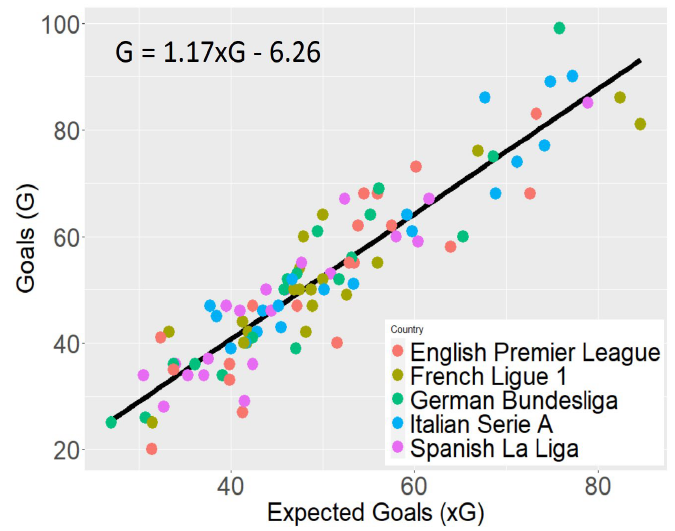
Below we see how each team in the English Premier league overperformed or underperformed with respect to their expected goals mark. Blue represents scoring more goals than expected and red fewer goals than expected.
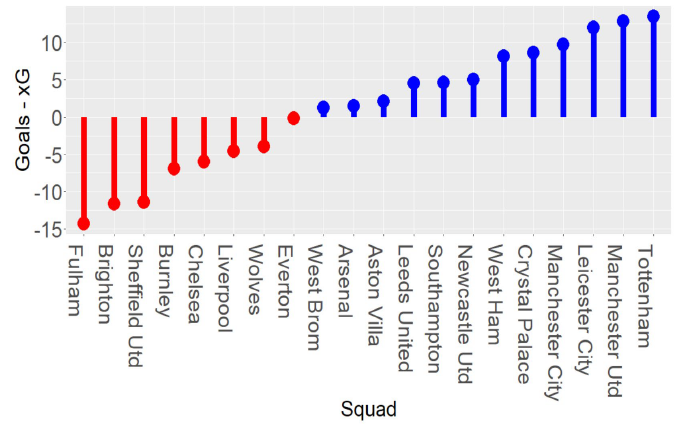
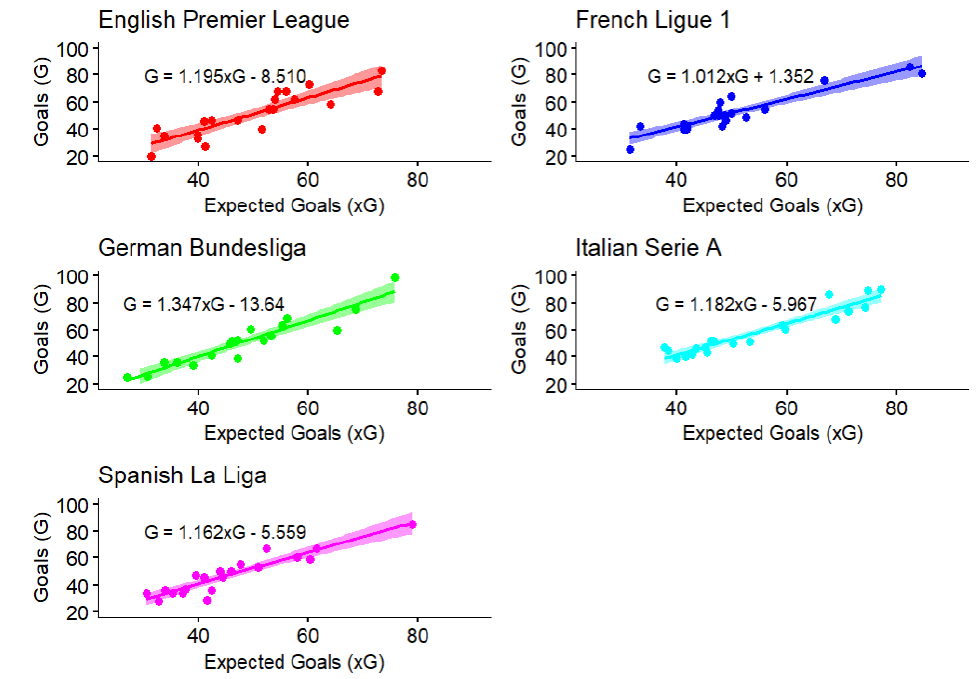
Is expected goals a good measurement? If xG was a good measurement, one would expect the distribution of goals minus expected goals to be centered around zero if so. This means that some teams score above their xG while some score below. We will perform a t-test to see if the mean is zero.
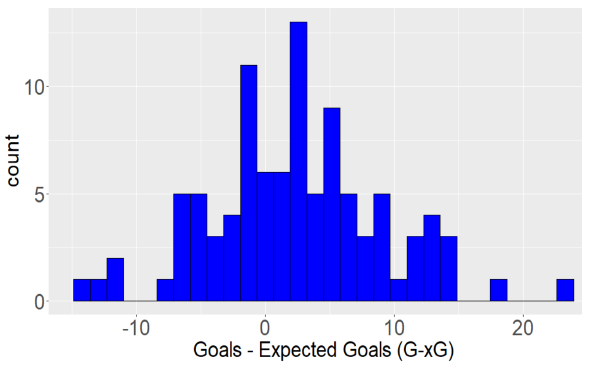
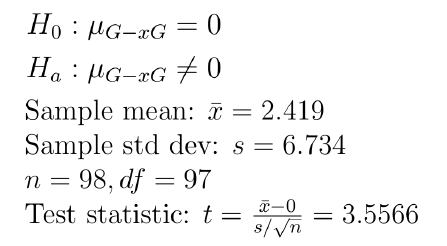
The p-value here is 0.0005. This is much less than 0.05 and we have strong statistical evidence that the expected goals metric is undervaluing the likelihood of a goal being scored. A 95% confidence interval for the true mean of this overcounting is between 1.07 and 3.77 goals per season.